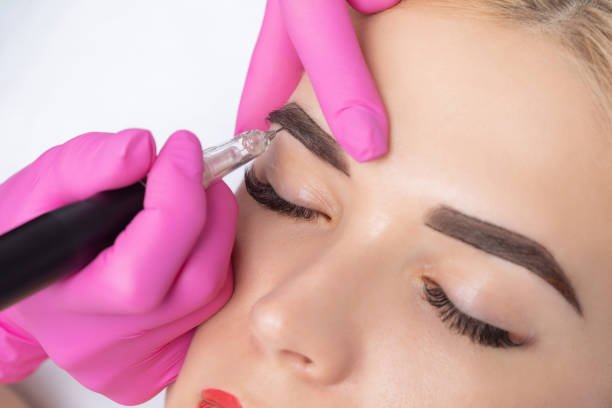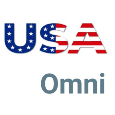Microblading is a technique used to enhance eyebrows by creating small, hair-like strokes with a blade and pigment. If you have oily skin and are considering microblading, the healing process may vary compared to those with dry or normal skin. And to make sure the color sticks around, there are some simple steps you can follow after getting microblading done on oily skin.
1. Day of Microblading:
On the day of the procedure, the microblading artist will use a small blade to create tiny cuts in your skin and deposit pigment in the eyebrow area. It might be a bit uncomfortable, but it’s usually not very painful.
2. Initial Healing (Day 1-7):
Your eyebrows will look darker and more defined right after microblading. This is normal, and the color will fade as your skin heals. The first week is crucial. Your eyebrows might scab and itch a bit. Avoid scratching or picking at them, as this can affect the healing process.
3. Scabbing and Peeling (Day 7-14):
Around the second week, scabbing and peeling may occur. This is a natural part of the healing process, and it helps the pigment settle. Let the scabs fall off on their own – don’t force them.
4. Color Fading (Weeks 2-4):
The color of your eyebrows may appear to fade during this time. Don’t worry; it’s typical. The final color will gradually reveal itself as the healing continues.
5. Oily Skin Considerations:
If you have oily skin, your microbladed eyebrows may heal a bit differently. Oily skin types may experience slightly more fading, and the strokes may appear softer.
It’s essential to keep your eyebrows clean and dry during the initial healing phase. Avoid excessive sweating, and don’t submerge your face in water, like in swimming pools.
6. Follow Aftercare Instructions:
Your microblading artist will provide specific aftercare instructions. Follow them carefully. This may include avoiding certain skincare products, sun exposure, and activities that could impact the healing process.
7. Touch-Up Appointment (4-6 Weeks):
A touch-up appointment is usually scheduled 4-6 weeks after the initial procedure. This allows the artist to assess how well your skin has accepted the pigment and make any necessary adjustments.
Remember, everyone’s healing process is unique, but by following the aftercare instructions and being patient, you’ll likely achieve beautiful, long-lasting results with your microbladed eyebrows.
Different skin types and their healing processes
When you’re thinking about getting microblading, it’s important to know your skin type. This matters because it can affect how your skin heals and how long the color lasts.
There are four common skin types: normal, oily, dry, or a mix of these. Some people with oily skin might worry that microblading won’t work for them. But guess what? It does! So, if you have oily skin, you can still go ahead and schedule that microblading appointment.
1. Normal Skin:
Normal skin types heal evenly, and the color from microblading sticks around for a good amount of time, like 1 or 1.5 years. After that, you might need a touch-up.
2. Dry Skin:
If your skin feels tight during the day and sometimes flakes, you probably have dry skin. The good news is, dry skin heals nicely, and the color from microblading stays on the longest, even up to 1.5+ years. Dry skin doesn’t have a lot of oils that can wash away the color.
3. Combination Skin:
Combination skin heals kind of like normal or a bit oily skin. It’s common for the eyebrow area to be a bit oily, so the healing is somewhere in the middle.
4. Oily Skin:
Oily skin is naturally well-hydrated and ages well, but it has more oil and bigger pores. If your skin is a bit oily, healing is like normal skin. But if it’s very oily, the color might spread out more, and you need to be a bit careful. Too much oil can clog your pores. So, for those with very oily skin, take extra care.
In simple terms, different skin types heal differently after microblading. Normal and dry skin usually do great, combination skin is somewhere in between, and if your skin is quite oily, just be a little extra cautious to keep those brows looking fabulous!
Side effects of microblading on oily skin
Doing microblading on oily skin is usually safe, but like any beauty thing, there can be some effects. Here they are, put simply:
- Your skin might puff up a bit and get red after microblading. It’s normal and usually gets better in a day or two.
2. You might feel a bit itchy as your skin gets better. But it’s super important not to scratch it to avoid problems.
3. The color might fade a bit faster on oily skin. You might need touch-ups more often than other skin types.
4. There’s a small chance of infection, but it’s rare if you do the aftercare right. Keep the area clean and don’t touch it too much.
5. Sometimes, the color might heal unevenly in some spots with oily skin. But your microblader can fix this with touch-ups.
Remember, these effects are usually not a big deal, and most people heal up fine. Just do what your microblader says after, and if something seems strange, ask them for advice.
Top tips for microblading on oily skin
Here are some helpful tips for doing microblading on oily skin:
1. Before you start, have a chat with a pro microblader. They’ll look at your skin and give you advice that’s just for you.
2. Choose someone who’s really good at microblading. Look at pictures of their work to make sure they know how to deal with oily skin.
3. Wash your face really well before the microblading. This helps get rid of extra oil and makes a good surface for microblading.
4. On the day of the microblading, don’t use heavy creams or oily things. This helps the color stick better to your skin.
5. Make sure the person doing your microblading uses good colors that last a long time. This is super important for oily skin.
5. Listen carefully to what your microblader tells you to do afterward. They might say no water, no sun, and no certain creams for a few days.
6. Oily skin might need more touch-ups than other skin types. Don’t worry, it’s normal. Just be patient and go back to your microblader if you need more.
7. Don’t pick or scratch where you got microbladed. This messes up how it heals and how it looks in the end.
8. After it starts healing, use products without oil to keep your new brows looking good and stop too much oil.
9. Keep an eye on how your skin is getting better. If something doesn’t look right, talk to your microblader as soon as you can.


